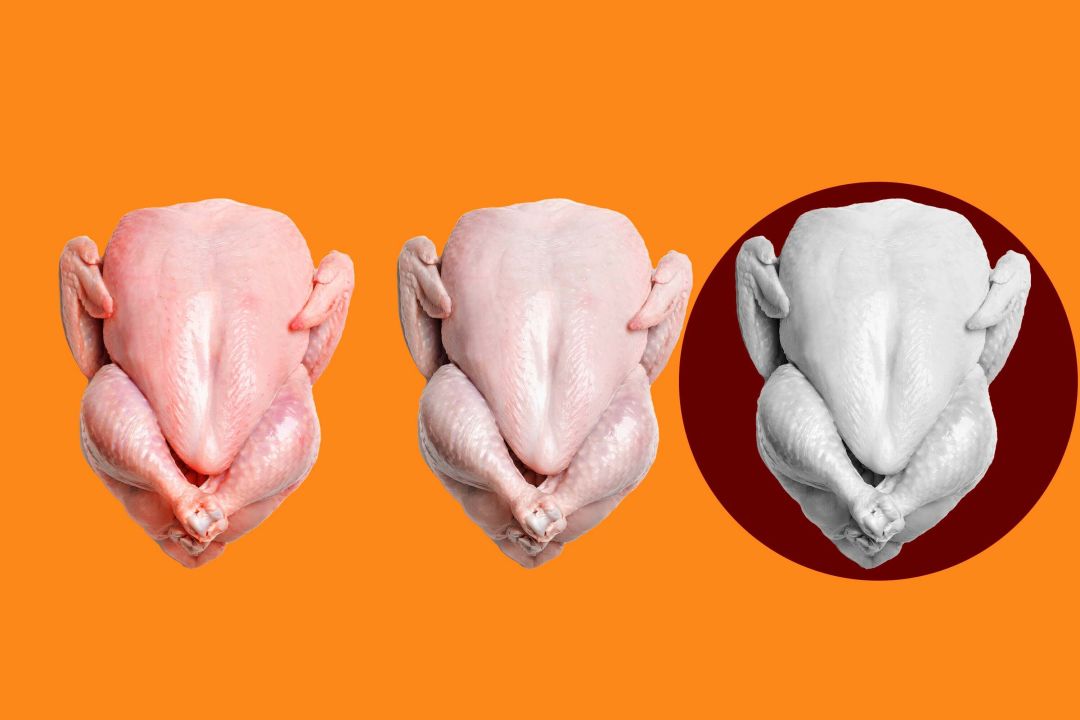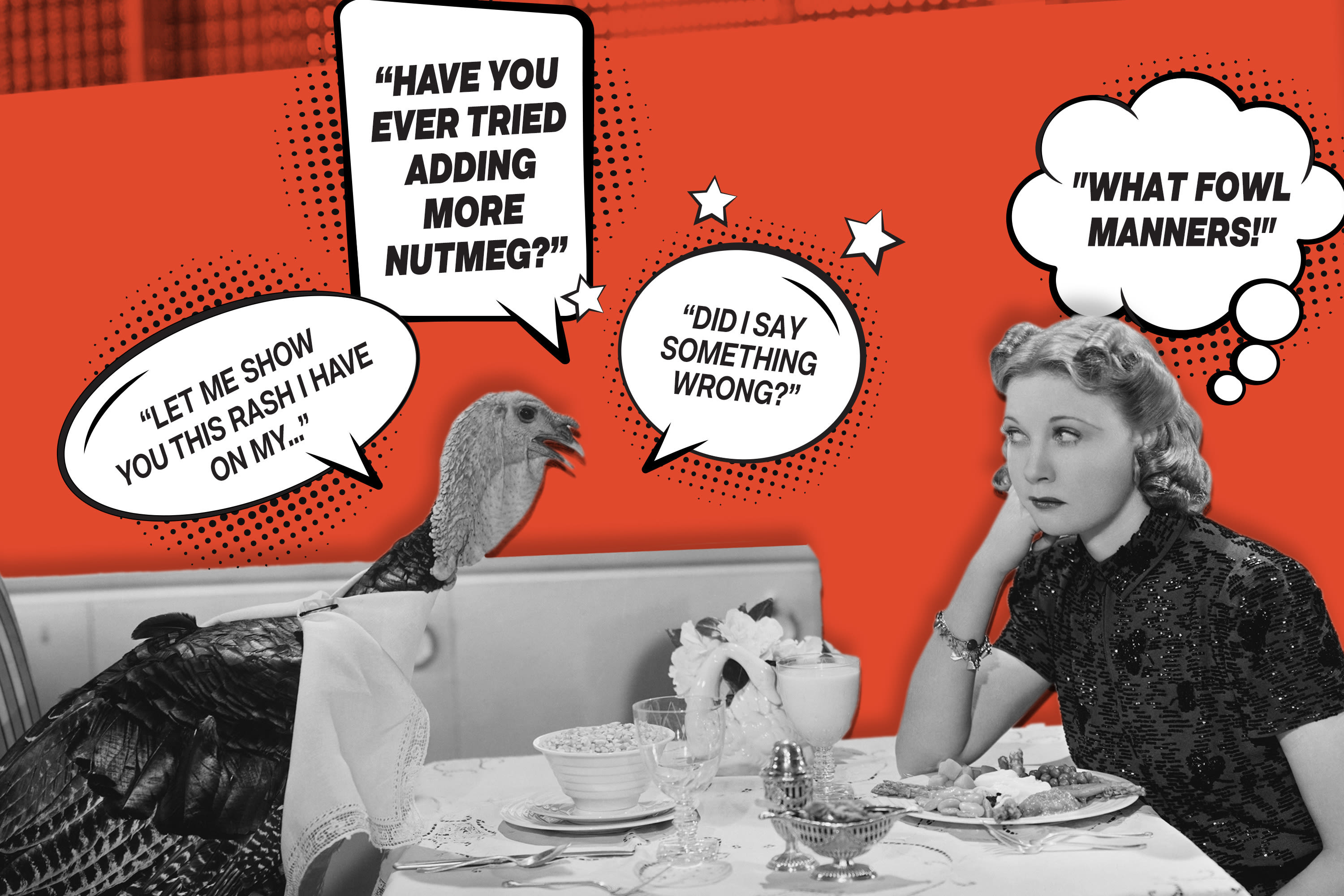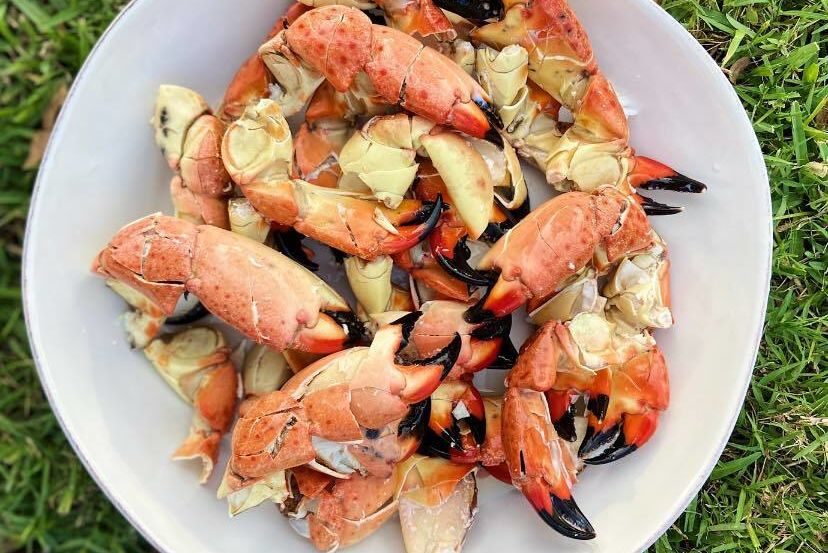Are Turkeys Becoming Less Flavorful?

Image: Kari Perrin/Shutterstock
There is a 99.9 percent chance that the turkey that will grace your Thanksgiving dinner table is the Broad-Breasted White. While alive, the Broad-Breasted White is a sad-looking creature—drained of color, with breasts so engorged they can barely walk.
While the wild turkey goes back some 20 million years, this new breed of fowl came into existence about 60 years ago and has since entirely dominated the turkey market. More than 270 million Broad-Breasted Whites will be raised and killed for meat in the United States this year, and an estimated 46 million of them will be consumed on Thanksgiving.
The Broad-Breasted White is not known for its flavor. In fact, many people find turkey so bland that they forgo the staple for Thanksgiving altogether. I myself didn’t know that turkey had flavor until a few years ago, when I ate a wild one a hunter shot. It tasted like pulled pork. So how did we go from wild turkey to mild turkey?
Of the scores of different breeds of turkey, the Broad-Breasted White became America’s preferred bird because of price, size and aesthetics. The modern Broad-Breasted White can reach marketable weight in a 16-week period on half the amount of feed as they needed 100 years ago. The Broad-Breasted White was also bred to be buxom, to appeal to Americans’ preference for white meat. Consumers also didn’t like the dark speckle left around each feather follicle from birds that that had colorful plumage, so in the 1950s, they turned the birds white.
Heritage turkeys—domestic turkeys with qualities of their wild cousins—are available to the American public, but haven’t caught on in a big way yet.
“Heritage turkeys are literally a different animal than what people are used to seeing and tasting,” says Tim Clarkson, the owner Grove Ladder Farm in Arcadia. “We raised and sold some slate and native Florida Osceola turkeys last season, but the majority of the feedback we got was that while people liked the flavor, because the heritage breeds are smaller and more expensive, with smaller breasts, our customers preferred the Broad-Breasted Whites.”
The irony is that the reason modern turkeys are so tasteless is, in part, because of their unwieldy size. It is difficult to safely roast a turkey that weighs more than 20 pounds without overcooking it. Turkeys, unlike pig and beef, are lean. Without all that fat, cooking them long enough to safely heat the center of the bird bleeds the meat of its moisture and dries it out. Our want of bigger birds comes at the cost of taste.
And, because of the possibility of salmonella exposure, there’s no way you should eat undercooked poultry. Each year, there are more than 1 million salmonella infections, requiring 20,000 hospitalizations that result in 400 deaths. And turkey is especially susceptible to carrying bacteria. A 2018 Centers for Diseases Control and Prevention study found that salmonella is disproportionately found in turkey.
Clarkson believes he’s found a safer, healthier and tastier solution to our turkey woes.
“We raise Broad-Breasted White turkeys on pasture,” he says, “so we give people something that they are familiar with, but it tastes better because of the way they are being raised.” That strategy provides the bird with a varied diet, which gives it a flavor you won’t find in your typical, store-bought turkey, which is likely raised in a cramped barn and exclusively fed feed designed to fatten the bird up as quickly as possible.
“All our birds are out on grass from two weeks old until the day they are processed,” says Clarkson. “When you include those plants and legumes and insects and all the other stuff in the grasses, it changes the flavor of the meat.”
The other thing that makes a Grove Ladder bird taste better is that the farm processes the turkey on site. While commercial turkeys are shipped across state lines to factory slaughterhouses, Grove Ladder does it all by hand at the farm. “Our turkeys don’t have to take that ride on the trailer and get subjected to 75-mile-an-hour winds and get all stressed out,” Clarkson says. “We just walk them up to the processing facility, catch them one at a time and kill them by hand. The turkeys that our customers eat are either killed the Monday or Wednesday before Thanksgiving.” (In addition to being more humane, here’s also evidence that ethically slaughtered meat tastes better.)
Unfortunately, Clarkson is all out of turkeys for this year. Grove Ladder will begin taking reservations for next year's Thanksgiving turkeys in August 2023.
Check out Grove Ladder Farm's other local food options at the farm's website.



